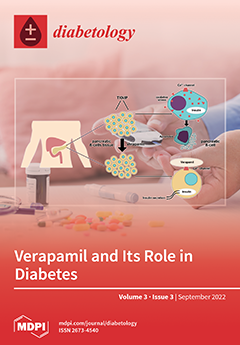Open AccessFeature PaperArticle
Diabetic Ketoacidosis Was Associated with High Morbidity and Mortality in Hospitalized Patients with COVID-19 in the NYC Public Health System
by
Sahana Parthasarathy, Natalia Chamorro-Pareja, Amrin Kharawala, Kenneth H Hupart, Joan Curcio, Christina Coyle, Daniel Buchnea, Dimitris Karamanis, Robert Faillace, Leonidas Palaiodimos and Preeti Kishore
Viewed by 2357
Abstract
Background: COVID-19 has been associated with a higher risk of death in patients with diabetes mellitus (DM). However, there is a dearth of data regarding the effects of diabetic ketoacidosis (DKA) in these patients. We explored the in-hospital outcomes of patients who presented
[...] Read more.
Background: COVID-19 has been associated with a higher risk of death in patients with diabetes mellitus (DM). However, there is a dearth of data regarding the effects of diabetic ketoacidosis (DKA) in these patients. We explored the in-hospital outcomes of patients who presented with COVID-19 and DKA. Methods: A propensity score-matched observational retrospective cohort study was conducted in hospitalized patients with COVID-19 in the public healthcare system of New York City from 1 March 2020 to 31 October 2020. Patients were matched, and a subgroup analysis of patients with DKA and COVID-19 and patients without COVID-19 was conducted. Results: 13,333 (16.0%) patients with COVID-19 and 70,005 (84.0%) without COVID-19 were included in the analysis. The in-hospital mortality rate was seven-fold in patients with DKA and COVID-19 compared to patients with COVID-19 and without DKA (80 (36.5%) vs. 11 (5.4%),
p < 0.001). Patients with COVID-19 and DKA had a two-fold higher likelihood for in-hospital death (OR: 1.95; 95% CI: 1.41–2.70;
p < 0.001) after adjusting for multiple variables. Conclusions: DKA was associated with significantly higher in-hospital mortality in hospitalized patients with COVID-19.
Full article
►▼
Show Figures





